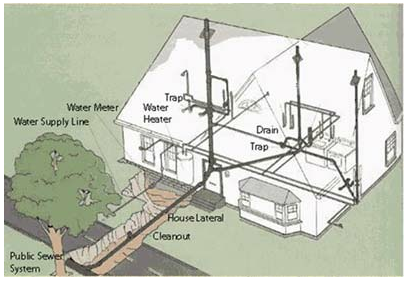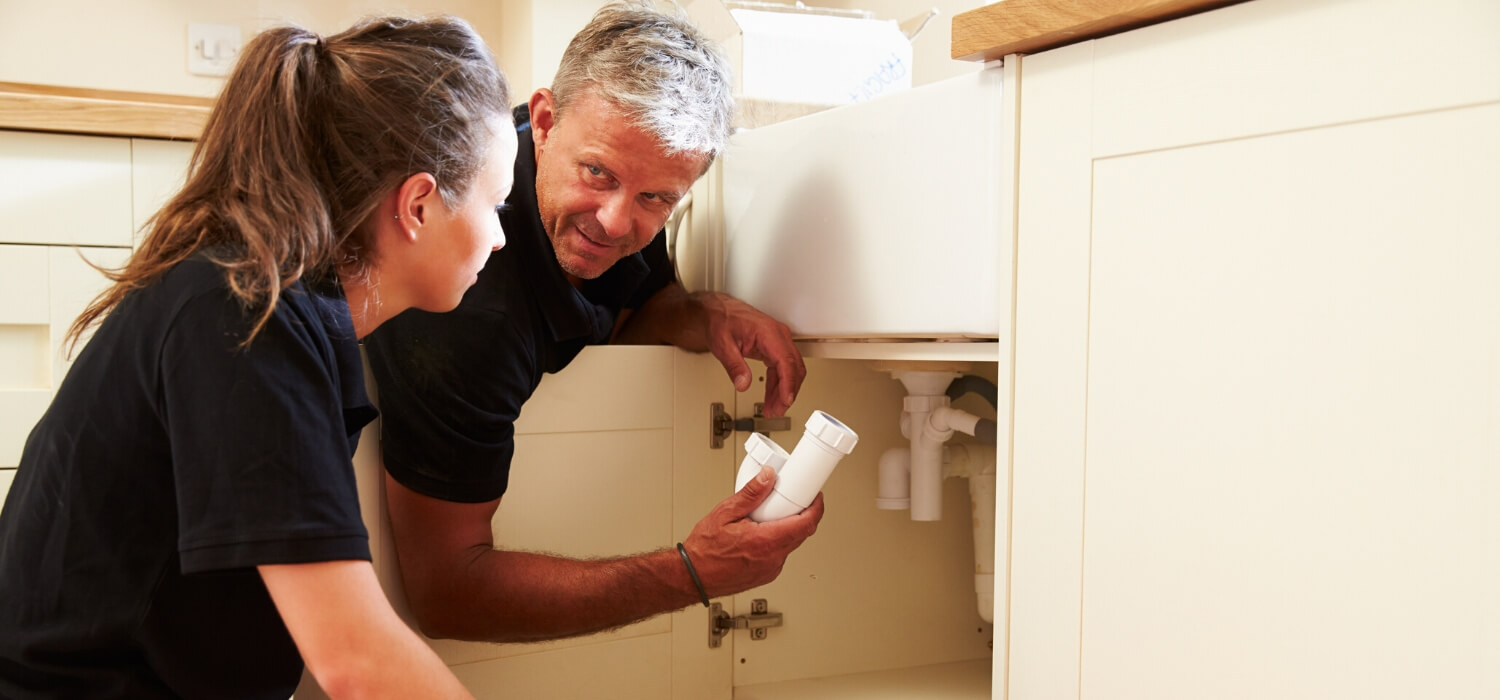What You Need to Know About Your House's Plumbing System Anatomy
What You Need to Know About Your House's Plumbing System Anatomy
Blog Article
Have you been hunting for resources on Anatomy of a House: Understanding the Components?

Understanding just how your home's plumbing system functions is necessary for every home owner. From providing clean water for drinking, cooking, and showering to securely eliminating wastewater, a well-maintained pipes system is essential for your family members's health and comfort. In this thorough guide, we'll discover the elaborate network that comprises your home's pipes and offer pointers on maintenance, upgrades, and handling typical problems.
Intro
Your home's plumbing system is more than simply a network of pipes; it's a complicated system that guarantees you have access to tidy water and efficient wastewater removal. Recognizing its components and how they interact can aid you prevent costly repairs and ensure everything runs smoothly.
Fundamental Elements of a Plumbing System
Pipelines and Tubes
At the heart of your plumbing system are the pipes and tubes that carry water throughout your home. These can be made from various products such as copper, PVC, or PEX, each with its benefits in regards to toughness and cost-effectiveness.
Fixtures: Sinks, Toilets, Showers, and so on.
Components like sinks, toilets, showers, and bath tubs are where water is made use of in your home. Comprehending exactly how these components link to the pipes system assists in detecting problems and planning upgrades.
Valves and Shut-off Factors
Shutoffs manage the flow of water in your plumbing system. Shut-off shutoffs are crucial throughout emergency situations or when you need to make repair work, allowing you to isolate parts of the system without disrupting water flow to the entire house.
Water System System
Key Water Line
The primary water line attaches your home to the local supply of water or a private well. It's where water enters your home and is distributed to various fixtures.
Water Meter and Pressure Regulator
The water meter steps your water usage, while a pressure regulator guarantees that water streams at a risk-free pressure throughout your home's plumbing system, protecting against damages to pipelines and components.
Cold Water vs. Warm water Lines
Comprehending the distinction between cold water lines, which supply water straight from the primary, and hot water lines, which bring heated water from the water heater, helps in troubleshooting and planning for upgrades.
Water drainage System
Drain Pipes Piping and Traps
Drain pipelines lug wastewater far from sinks, showers, and bathrooms to the sewage system or sewage-disposal tank. Catches stop drain gases from entering your home and likewise trap debris that could cause clogs.
Air flow Pipelines
Ventilation pipes enable air into the drain system, avoiding suction that could slow down drain and cause catches to empty. Proper ventilation is important for maintaining the stability of your plumbing system.
Value of Proper Water Drainage
Making sure correct drainage prevents back-ups and water damages. On a regular basis cleaning up drains and maintaining catches can stop costly repairs and prolong the life of your plumbing system.
Water Heating System
Types of Hot Water Heater
Water heaters can be tankless or standard tank-style. Tankless heating units warmth water on demand, while containers keep heated water for prompt use.
Upgrading Your Pipes System
Reasons for Updating
Updating to water-efficient fixtures or changing old pipes can improve water quality, lower water expenses, and raise the value of your home.
Modern Pipes Technologies and Their Benefits
Discover modern technologies like clever leak detectors, water-saving bathrooms, and energy-efficient water heaters that can conserve money and lower environmental impact.
Price Considerations and ROI
Compute the in advance expenses versus lasting cost savings when considering plumbing upgrades. Several upgrades spend for themselves with reduced energy expenses and fewer fixings.
Exactly How Water Heaters Attach to the Pipes System
Recognizing exactly how water heaters attach to both the cold water supply and warm water distribution lines helps in detecting problems like insufficient hot water or leaks.
Upkeep Tips for Water Heaters
Frequently purging your water heater to eliminate debris, inspecting the temperature level setups, and examining for leakages can extend its life expectancy and enhance energy effectiveness.
Usual Plumbing Concerns
Leaks and Their Reasons
Leaks can happen due to maturing pipelines, loose fittings, or high water stress. Dealing with leakages without delay prevents water damages and mold and mildew growth.
Obstructions and Blockages
Blockages in drains pipes and toilets are typically brought on by purging non-flushable items or a buildup of grease and hair. Using drain displays and bearing in mind what goes down your drains pipes can prevent clogs.
Indications of Plumbing Issues to Expect
Low tide stress, sluggish drains pipes, foul odors, or abnormally high water costs are signs of potential plumbing troubles that need to be resolved without delay.
Plumbing Upkeep Tips
Routine Assessments and Checks
Arrange yearly pipes assessments to catch problems early. Search for signs of leaks, corrosion, or mineral accumulation in faucets and showerheads.
DIY Upkeep Tasks
Easy tasks like cleansing faucet aerators, checking for bathroom leaks utilizing dye tablets, or insulating exposed pipes in cold climates can protect against significant plumbing problems.
When to Call an Expert Plumbing Professional
Know when a plumbing problem needs professional proficiency. Trying complex fixings without appropriate expertise can result in even more damages and higher repair costs.
Tips for Lowering Water Usage
Easy practices like fixing leakages immediately, taking shorter showers, and running complete lots of washing and dishes can conserve water and lower your energy expenses.
Eco-Friendly Plumbing Options
Consider lasting plumbing materials like bamboo for floor covering, which is durable and environment-friendly, or recycled glass for counter tops.
Emergency Readiness
Steps to Take During a Pipes Emergency situation
Know where your shut-off valves lie and how to shut off the supply of water in case of a burst pipeline or major leak.
Significance of Having Emergency Calls Useful
Maintain get in touch with information for neighborhood plumbing technicians or emergency solutions conveniently available for fast reaction during a plumbing crisis.
Ecological Effect and Preservation
Water-Saving Fixtures and Appliances
Mounting low-flow taps, showerheads, and toilets can dramatically reduce water usage without compromising efficiency.
DIY Emergency Situation Fixes (When Suitable).
Temporary repairs like using air duct tape to patch a dripping pipeline or putting a pail under a dripping faucet can decrease damage till an expert plumber arrives.
Final thought.
Understanding the composition of your home's plumbing system equips you to keep it effectively, saving money and time on repair work. By adhering to regular upkeep regimens and remaining notified concerning modern plumbing technologies, you can ensure your pipes system operates effectively for years to come.
HOW YOUR PLUMBING SYSTEM WORKS
Which Pipes Do What?
Blue lines = fresh water supply entering the building Red lines = hot water supply entering the building Grey lines = pipes carrying waste away from the building and venting pipes carrying gases away from the building (through the roof) YOUR MAIN PLUMBING SYSTEMS
There are two main plumbing systems that support your home s basic plumbing needs one that brings clean water into your home, and one that sends dirty water away from your home. Connected to the toilet, bath, shower, and other faucets in your home, these two systems keep your water flowing in the right directions.
ACCESSING FRESH WATER
Fresh and clean water is brought into your home through the main water supply line . Filtered through one pipe, this water is pressured to flow into the various fixtures in your home at any given time.
This water can be sourced from a well located on your property, a pond or river (mostly cottages), or, as in most cases, from the city s municipal water treatment centre. However, it is important to note that water that is untreated, such as the water siphoned from ponds or rivers, may not be safe to drink. Personal water supplies always need to be treated for hardness and contaminants before consumed.
MUNICIPAL WATER SUPPLIES
Improve taste and odour Remove sediment Eliminate hardness Reduce chlorine COLD WATER SUPPLY VS. HOT WATER SUPPLY
Cold water flows into your home or building through the service line, which then distributes hot or cold water to your fixtures. This line is most commonly run through a central column that runs floor to floor. Hot water runs in short and straight pipes as the longer the pipeline, the more heat that will be lost in the transfer. Having shorter pipes also allows residents to access hot water more quickly.
WASTE WATER SYSTEM
Your wastewater system is divided into two parts pipes that send wastewater away from your home and venting pipes that send sewer gas away from your home. Sewage water travels through pipes that flush the water and waste towards local sewers that are operated and managed by your city or town. Most sewer systems rely on gravity to move the wastewater to where it needs to go.
The further away from your toilet or sink, the larger wastewater pipes become. This allows for waste to be disposed of from various parts of your home or business at once without pipe blockages. The angle and flow of these pipes are also essential for keeping your waste pipes clear of build up.
https://harrisplumbing.ca/how-your-home-plumbing-system-works/

We hope you enjoyed reading our section on . Thanks for taking time to read our blog. Sharing is caring. Helping people is fun. Thank you so much for your time spent reading it.
Browse Website Report this page